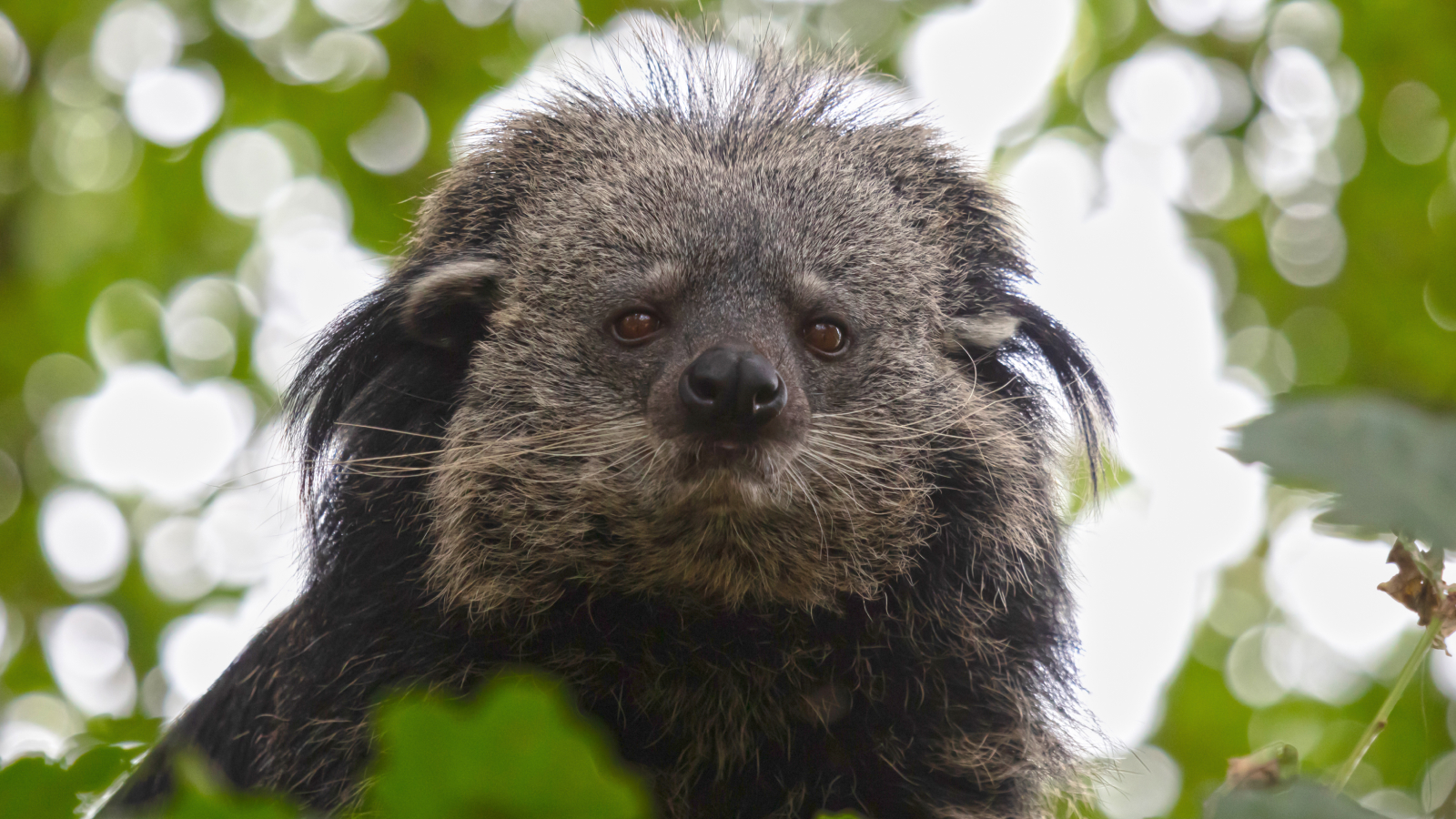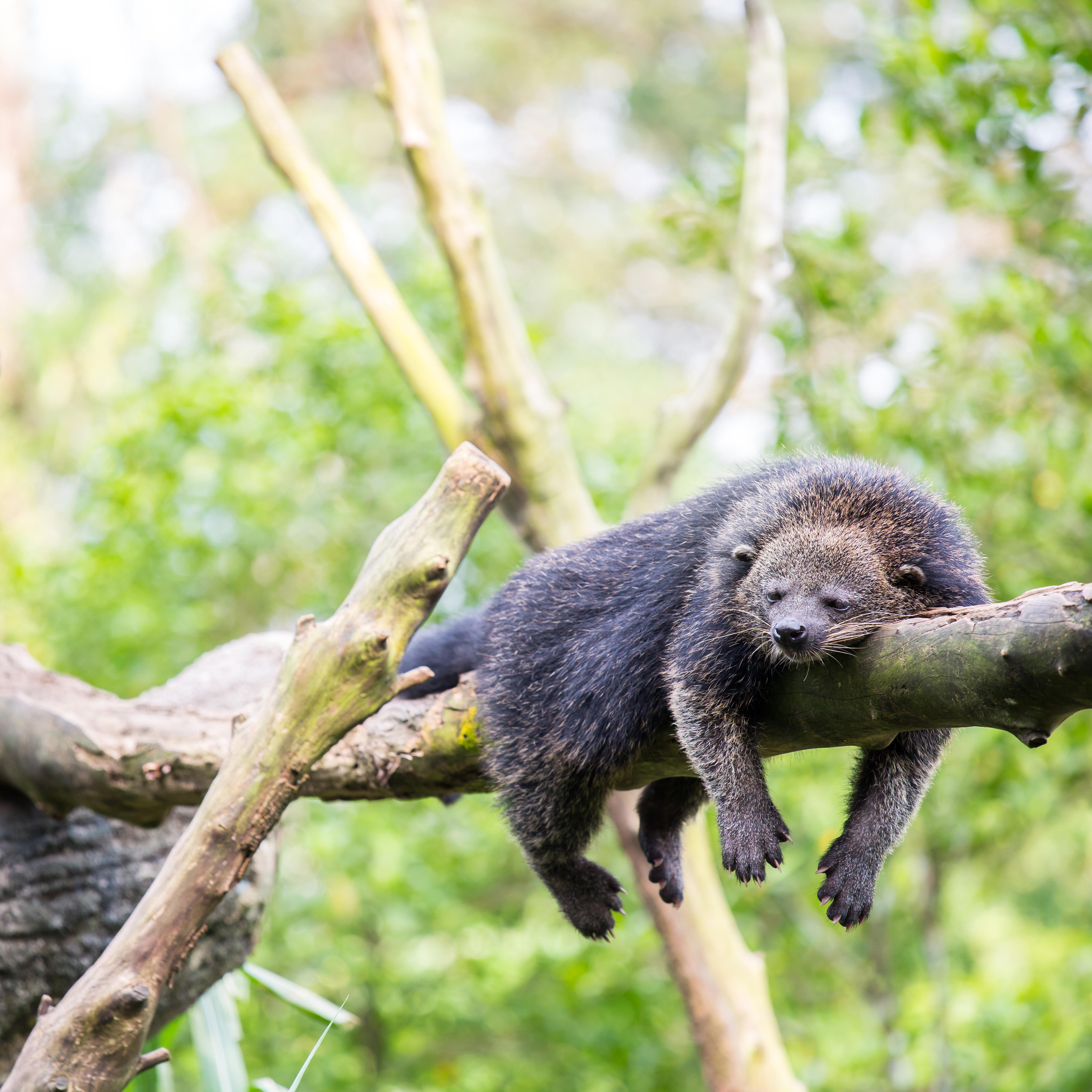Binturong: The bearcat that smells like hot buttered popcorn
Binturongs' popcorn perfume plays a vital role in communication, helping them mark their territory and signal their presence to others in dense tropical rainforests.

Name: Binturong (Arctictis binturong)
Where it lives: Tropical forests of South and Southeast Asia
What it eats: Small mammals, rodents, birds, fish, earthworms, insects and fruits
With their thick black fur, stocky bodies and long whiskers, binturongs look like a hybrid between a bear and a cat, earning them the nickname "bearcat." But these mammals aren't just notable for their unusual appearance — they also smell like buttered popcorn.
Native to the dense tropical rainforests of South and Southeast Asia, binturongs can grow to between 2 and 3 feet (60 to 90 centimeters) long and weigh 24 to 79 pounds (11 to 36 kilograms). They are members of the civet family — mostly nocturnal mammals native to tropical Asia and Africa. Binturongs spend most of their time high in the treetops, where they move slowly through the branches at night.
One of the binturongs' most unusual traits is their smell. These creatures smell like hot buttered popcorn because they release a chemical compound called 2-acetyl-1-pyrroline — the same compound produced during the cooking of popcorn or freshly baked bread. The scent is secreted through glands located beneath their tails, and they use it to mark branches and leaves as they move.
This popcorn perfume plays a vital role in communication, helping binturongs mark their territory and signal their presence to others, especially in the dense, dimly lit canopies where they live. According to a 2016 study, the aroma is more concentrated in males. This may be because having more of the chemical helps males advertise their presence and hormonal status to females, which may be important in mate selection.

Despite their stocky appearance, binturongs are agile climbers. They have long, muscular tails that act like a fifth limb, helping them grip branches and support their weight. Binturongs are one of only two carnivorous mammals with a fully prehensile tail , which is likely an evolutionary adaptation because they live among the treetops.
Binturongs are largely solitary, preferring to sleep curled up on branches during the day. At night, they emerge to forage. Their eyes are adapted for low light so they have poor vision in daylight. However, their strong sense of smell compensates for this. Binturongs are also vocal animals, often snorting, chuckling or purring when they're content, and expressing annoyance or fear through screams, hisses or howls.
Get the world’s most fascinating discoveries delivered straight to your inbox.

Lydia Smith is a health and science journalist who works for U.K. and U.S. publications. She is studying for an MSc in psychology at the University of Glasgow and has an MA in English literature from King's College London.
You must confirm your public display name before commenting
Please logout and then login again, you will then be prompted to enter your display name.


